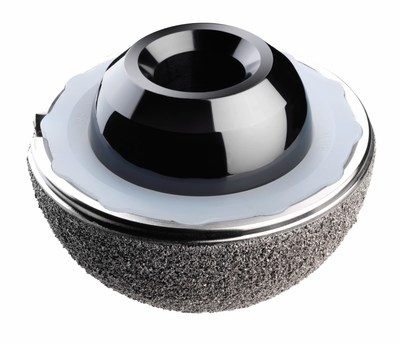Hip replacement surgery replaces part of the hip joint called the ball-and-socket with artificial materials. Metal, plastic, and ceramic can all be used to replace the hip joint.
Similar to your natural joint surfaces, the friction created by the implant's surfaces rubbing together could cause the surfaces to wear down as time goes on. And, this wear of the implant is a top cause of joint replacement failure. Implants can last anywhere from 10 to 15 years before they begin to wear, but this type of thinking has become a problem.
However, Verilast with oxinium, can help with this. Verilast technology has gone through 30 yr performance testing lab-testing. While 30-years of wear performance may seem like a substantial statement for any manufacturer of implants to make, Verilast technology can be backed up.

Oxinium oxidized zirconium is a type of metallic alloy. It has a ceramic surface that offers resistance to wear without brittleness. The oxinium material mixes the best of ceramics and metal.
Verilast hip replacement technology is an outstanding combination of low-friction, advanced materials made for addressing implant surface wear on both surfaces.
Lab testing has proven Verilast technology can reduce hip implant wear about 67% when it was compared with standard materials like highly cross-linked plastic and cobalt chrome implants, even after going through 45 million laboratory wear simulation test cycles. This test is nine times longer than industry-standard tests for hip replacements.
If you're a good candidate for a Verilast technology-made implant, the thigh bone portion (femoral) of your implant will be crafted with Oxinium Oxidized Zirconium. This is an award winning and patented ceramicised metal alloy developed by Smith + Nephew.
Oxinium implants go through a process during manufacturing that changes the surface of the implant into a ceramicist, hard metal. But it retains all of the underlying metal's durability. Along with being more durable than genuine ceramic, the ceramicist surface of this metal implant is far more hard and resistant to the type of scratching caused by a worn out cobalt chrome implant before its time.
Unlike other types of implants, Verilast hip technology uses low-friction, advanced surfaces for both of your hip joint surfaces. The mixture of XLPE and ceramicist has the highest survival rate of any researched hip.
Verilast technology is the initial solution to blend an extremely crosslinked high molecular weight polyethylene tibial insert andverilast knee Oxinium Oxidized Zirconium femoral component for forming an state-of-the-art TKA (Total Knee Arthroplasty) bearing.
Choosing whether or not you should undergo a knee or hip replacement procedure is an extremely important decision. Regardless of how successful and statistically safe a replacement procedure has been shown to be, all surgeries have risks.
Knee and hip conditions limit your daily living activities because of limited mobility and pain. Knee replacement surgery and hip replacement surgery can help you get back to your normal lifestyle. And, although joint replacement procedures like these are safe, there are always the potential of risks with any surgery.
Before you make any decision about surgery, you should talk with your primary care doctor, family and orthopedic surgeon to ensure a knee or hip replacement procedure with Verilast technology is the ideal choice to make in your specific situation.
The results of individual joint replacement procedures vary. The point to implants is to improve knee function and relieve knee pain, however, it might not produce the exact same function or feel as your natural knee. Knee replacement surgery does pose potential risks like:
This could lead to the need for another surgery. You shouldn't perform any high impact activities, like jumping and running, unless your surgeon tells you your bone has healed and it's okay to perform these types of activities. If you don't follow your surgeon's activity level limitations, it could result in early:
Implant longevity will depend on various factors, including your weight and types of activities you perform. Early failure could occur if you don't guard the joint of your knee from overloading because of activity level, an accident like a fall or failure to control body weight.
The contents of the website is not meant to replace an in- person consultation. Please follow the advice of your doctor via in-person consultation. This website will not assume any legal responsibility for the patient's medical condition.